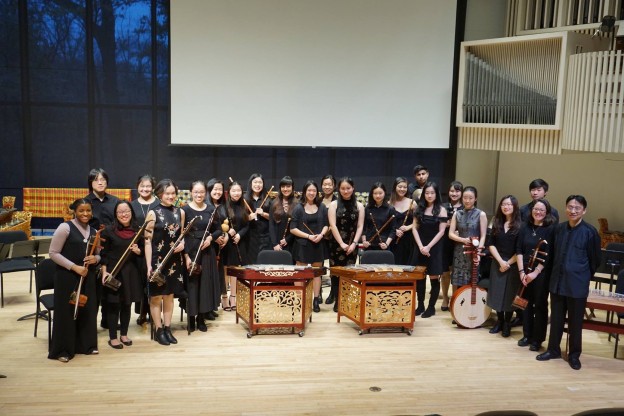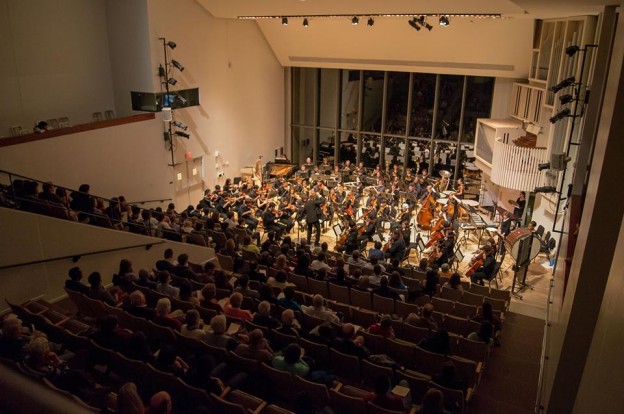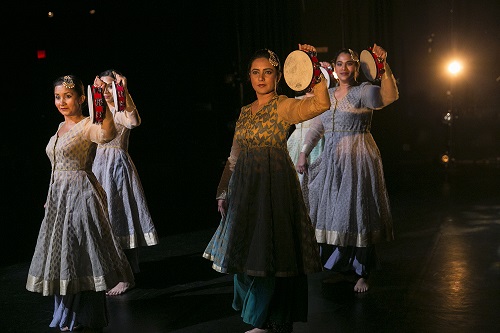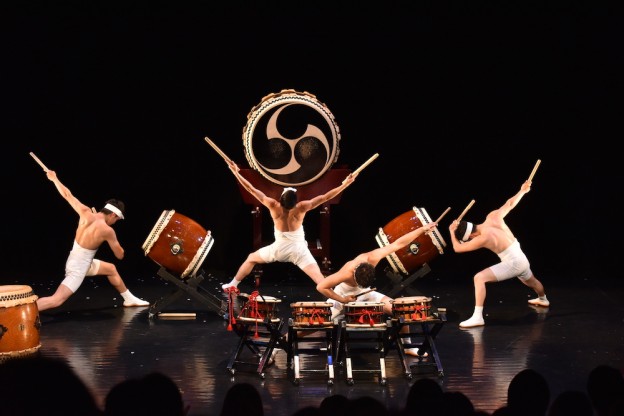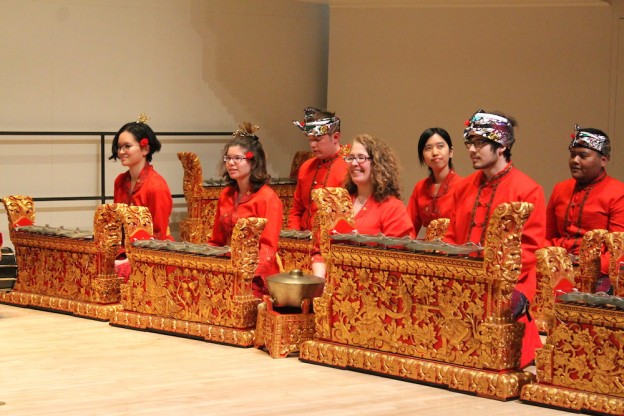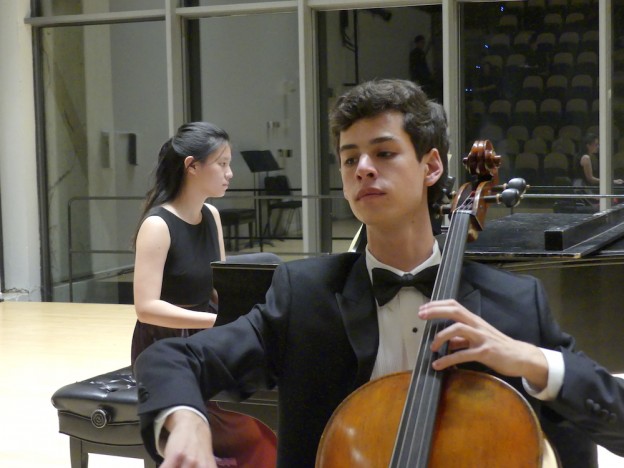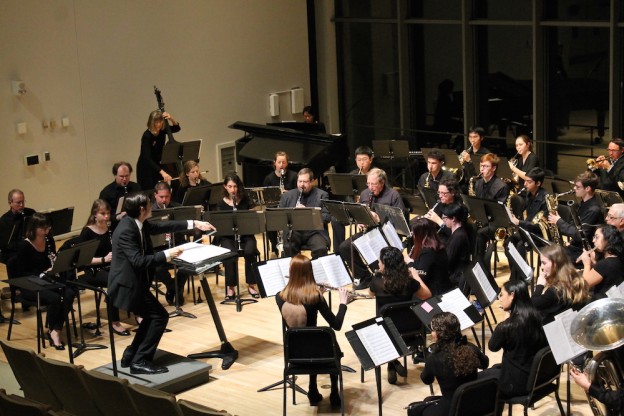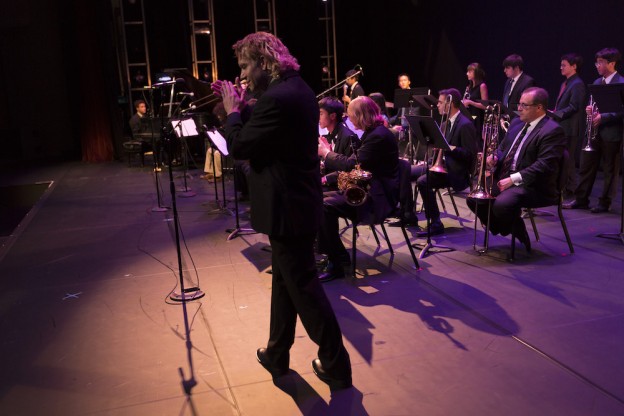Swarthmore’s campus is always bustling with students’ musical performances, from the Parrish Parlor concert series to senior recitals. This spring the Jazz Ensemble will not only be performing their usual semester concert, but will also be taking their talents to the outside world and treating the patrons of Chris’ Jazz Cafe in Philadelphia to a musical evening.
The Swarthmore College Jazz Ensemble is holding their spring semester concert on April 7th, at 7:30 PM in Lang Concert Hall, and ensemble director Andrew Neu says that it will be a musical and emotional journey for those in attendance. The Jazz Ensemble performs a varied repertoire for each concert, with this upcoming concert featuring pieces from Count Basie, Miles Davis, Ray Charles, Charlie Chaplin, Gordon Goodwin, Stan Kenton and Christina Aguilera. Furthermore, they will be playing the jazz standards “My One and Only Love,” “One Mint Julep,” and “Smile.”
The Jazz Ensemble Concert happens in both the fall and spring semesters, but Neu points out that it is easier to know the strengths of the ensemble for the spring concert. “Generally in the spring semester, we have a better idea of the personnel returning to the band and it helps knowing the strengths and personalities of the musicians when choosing repertoire,” Neu said. “That being said, we still devote a good amount of time sight reading music to find the best matches and I always look for input from the students and ask their opinions on the music we read.”
Neu states that there is always a “get to know each other” period when band membership shifts each semester. “Andrew Hauze (College Orchestra and Wind Ensemble Director) inspired us to start having a ‘juice break’ during rehearsal,” Neu said. “This breaks up a three-hour rehearsal and allows the band to socialize and connect outside of the rehearsal. It’s made a huge difference in the chemistry of the group.”
Pianist Jordan Ando ‘22 will be participating in the upcoming ensemble concert and agrees with Neu about negotiating the group dynamics in any new band. “A jazz big-band has four distinct sections, each often doing their own thing,” Ando said. “As you might imagine, there’s a lot of moving parts to fit together in each piece and it can take a lot of patience to run the same section over and over again but it’s worth it in the end.”
Having played jazz since he was twelve years old, Ando knew he wanted to join the jazz ensemble when he chose Swarthmore College, despite not majoring in music. Ando is most excited to showcase his own original pieces in the combo. “In addition to big-band, I’ll also be playing with a smaller group, currently consisting of Joe Scott ‘22, Owais Noorani ‘21, Peter Wu ‘22, and myself,” Ando said. “We’ll be performing the Hank Mobley standard ‘This I Dig of You,’ an arrangement I did of Nick Drake’s ‘River Man,’ and two original pieces I wrote. The four of us recently debuted this set in a lunch hour concert, and were pleased how it turned out.”
Last semester was the first time that the Jazz Ensemble Concert included student vocalists; Neu decided to expand that part of the program for the spring concert because it was a big hit with the previous audience.
Ando will have a role in the vocal component of the concert, playing some of the tunes to accompany the vocalists. “There’ll be some vocal features in there as well, including renditions of ‘Come Fly With Me’ and ‘Genie in a Bottle’ (the latter wonderfully arranged by Swarthmore’s own band director, Andrew Neu),” Ando said. “I’ll be playing half the tunes—there’s plenty more than are listed here—and the other half will be covered by the brilliant Leo Posel ‘22.”
Veronica Yabloko ’22, one of the vocalists, is on her second semester performing with the Jazz Ensemble. A passionate singer, she also takes vocal lessons through the Music 48 program, and is part of both the Swarthmore College Chorus and student a cappella group Mixed Company. However, “I’ve always been most drawn to jazz,” says Yabloko. “It’s my favorite style to sing by far. I also sang with my high school jazz ensemble so when I came to Swarthmore and heard that there was a jazz ensemble here, I right away asked if I could join it.”
Discussing her favorite pieces done as part of the Ensemble, she notes that “Andrew Neu is a great director, and the students who play in the ensemble are so talented…It’s quite an adrenaline rush to sing with a phenomenal ensemble backing of you. I really enjoyed singing ‘Come Rain or Come Shine’ last semester, but some of this semester’s repertoire is a close second.”
The upcoming show at Chris’ Jazz Cafe, according to Professor Neu, “will be the first time we’ve taken the band off campus…I’m thrilled that more jazz fans will hear the amazing things that Swarthmore musicians can do.” The cafe itself, as he explains, “…is a mainstay in the Philadelphia jazz community. It’s one of a handful of full-time jazz clubs and has been around the longest. I’ve performed there many times over the years and built a good relationship with them.”
The performance will showcase songs from both the last and the current semesters’ repertoires, featuring music from a variety of artists – from jazz classics such as Ray Charles and Miles Davis to more contemporary music by Christina Aguilera. The show will take place at Chris’ Jazz Cafe (1421 Sansom Street, Philadelphia) on April 16, from 7:00 to 10:00 PM. Tickets can be purchased athttps://www-chrisjazzcafe-com.seatengine.com//shows/98604. To see the Jazz Ensemble at Swarthmore College, come to Lang Concert Hall on Sunday, April 7th at 7:30 PM.
David Chan ’19 and Emilie Hautemont ’20
